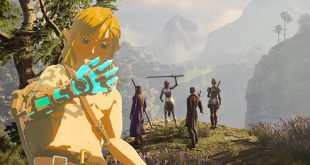For over a decade I’ve used SGO’s [post-production suite] Mistika to work on both 2D and 3D blockbusters across broadcast and cinema, including titles such as Star Wars: The Force Awakens, Transformers: Age of Extinction, Star Trek: Into Darkness, Beneath, The Amazing Spider-Man and Prometheus as well as TV shows such as Chosen and the upcoming StartUp.
Working on Quantum Break appealed to me straight away because of its technical challenges. I have three Mistikas at LightBender and we use them for a variety of projects, but this was the first time I’ve worked on such a unique gaming project that’s so different from any other. They started shooting in February 2015 and it took approximately eight months to deliver the final cut, using Mistika to review VFX and serve as a hub for conforming and versioning.
Quantum Break was interesting because it’s still a product that needs colour grading but built into the whole concept of a video game. This means there isn’t one set storyline – the actual story changes multiple times when you start playing the game, so it was imperative I come up with a workflow that we could work effectively across all the different scenarios.
I worked as the VFX supervisor and colourist on the project, and I built a team of over forty people in three different countries. What made this project unique is the fact that it relied so heavily on the gameplay of the user in an active timeline of events. As far as I know, it’s the first thing that’s ever been done at this scale. It required a great deal of VFX, very complex visuals, and a huge amount of planification and accuracy.
One of the things I like to do as a colourist is to get involved from the pre-production. In this case I was in a really great position: being the VFX supervisor of the show as well allowed me to be present from the first script draft. I was able to discuss the way it looked not only with the director, but also with the game developers and all the creative teams involved. That helped me create a more solid set of looks that made sense from the very beginning and were intimately connected with the game itself.
Even though we knew how the world was supposed to look, it took a bit of time to sort all of this peripheral action, design interfaces, concepts and VFX to match. One of my favourite challenges for VFX is that the protagonist character is able to freeze scenes. There’s ‘time stutters’ where scenes top and the player can move around a world that is totally frozen. To make this more realistic and organic, these scenes were shot on a handheld camera instead of motion control which produced a ‘shocking’ and ‘off balance’ look to it.
Player decisions would ultimately affect the episodes of the show. Using Mistika helped re-conform really quickly as you can go through chunks of the four episodes with all options open.
One of the trickiest concepts of the project was the freedom of choice of the player. After each section of the game – and during it – the player faces certain decisions. Those decisions would ultimately affect the episode of the show they will see and some of these could potentially be very dramatic changes. Using Mistika helped re-conform really quickly as you can go through chunks of the four episodes with all options open, cutting them all in together at the end. Mistika allows for a full timeline with the main narrative displayed alongside all the different variations making it easy to render all together.
All of this particularities provided a very intense scenario for editorial, so in the hope of giving them as much time as possible to polish, I made the decision to start the colour grading before the timelines were locked. Mistika allowed us not only to get a feeling of the scenes, but we could trace each episode back to before we had the final episode. This made the re-conform process really easy. Previously every change would take a lot of time and money, but with Mistika you’re not afraid of making these changes.
The whole show was shot on Alexa XT, using the latest firmware in ProRes 4444 XQ files. However, Mistika did not support this file type at the time. I sent a couple of the files over to the SGO team in Spain and within a couple of weeks they developed the support for the files within the system. 16-bit TIFF files were then created for the VFX from the original ProRes 4444 XQ files, since ProRes XQ is a 12-bit format and we wanted to make sure we would preserve the latitude.
Alongside its speed, the main reason I use Mistika is because of the technical freedom and creativity it allows me. I’ve always been very technical in my career, thinking outside of the box, and I love to do things a little differently. Mistika works with all its tools in customisable ways for a fully artistic purpose, not tied up into rigid structures. For me, it’s the most versatile tool in the market. It doesn’t matter how crazy the project is and what range of tools are needed. Mistika always allows me to do whatever I need, and Quantum Break was the perfect project to show just that.
Juan Ignacio Cabrera is the first SGO Mistika operator living in the U.S. and previously worked as a colourist and stereo 3D supervisor at J.J. Abrams’ production company, Bad Robot. He now owns his own studio, LightBender.

 MCV/DEVELOP News, events, research and jobs from the games industry
MCV/DEVELOP News, events, research and jobs from the games industry


